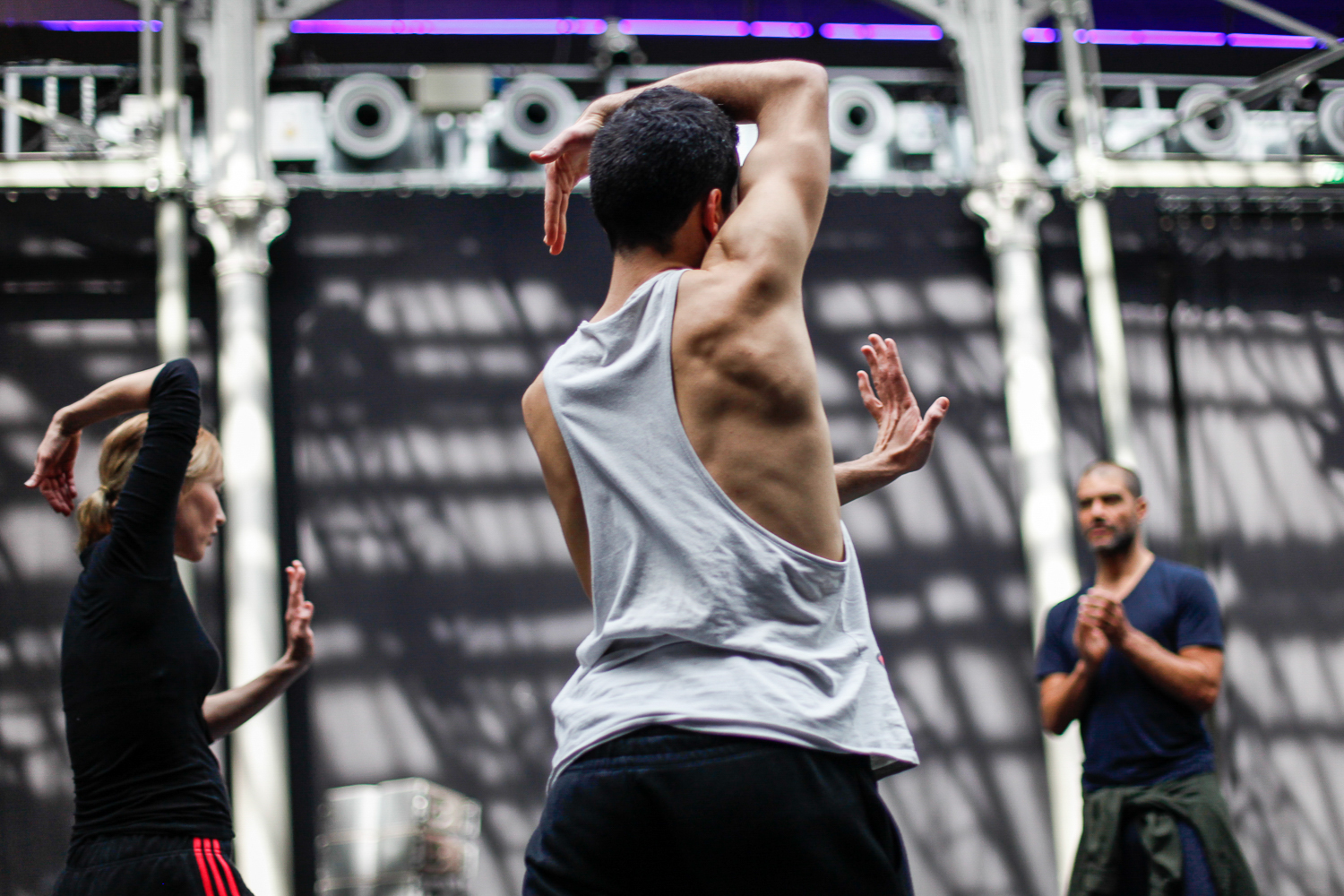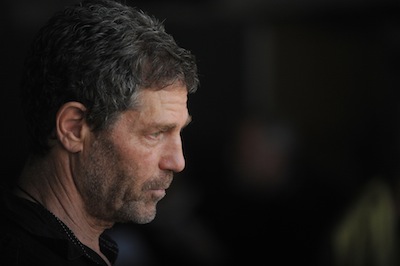Choreographer Emanuel Gat, who was in Vancouver for a few weeks at the beginning of the year, will return for the Ballet BC world première of his new work.
Ballet BC finishes this season May 11-13 with Program 3, which features a world première by choreographer Emanuel Gat, an almost world première by Emily Molnar and the Ballet BC première of Minus 16 by Ohad Naharin.
“I have long admired the works of Emanuel Gat and Ohad Naharin and have been eager to bring them to our artists and audiences,” says Molnar, artistic director of Ballet BC, in the press release announcing the program. She isn’t the only one to admire the creativity of choreographers Gat and Naharin, and many dance fans will be excited to see their work performed. Professional dancers age 16 and over will even have a chance to learn with Gat in person on May 6, when he teaches excerpts from the 30-minute piece he created for the full Ballet BC company (balletbc.com/choreographic-workshop-emanuel-gat).
Both Gat and Naharin started their dance careers relatively late, in their 20s, but have more than made up for any lost time. Born in 1952 in Kibbutz Mizra, in northern Israel, Naharin has been artistic director of Batsheva Dance Company since 1990 and is the creator of the movement language called Gaga – it is not an exaggeration to say he is an icon of contemporary dance. Born in Netanya in 1969, Gat is artistic director of Emanuel Gat Dance, which he established in 2004, and his works have been performed around the world.
Gat’s career trajectory changed when, at age 23, he attended a workshop led by another Israeli choreographer, Nir Ben Gal.
“I was studying music at the time,” Gat told the Independent in an email interview. “I’d just started a first year at the Rubin Academy of Music, and intended to be a conductor. I stopped a few months after starting to dance.”
Within a couple of years, Gat was working as an independent choreographer. When he founded his company, it was at the Suzanne Dellal Centre in Tel Aviv, which Batsheva Dance Company also calls home. However, after about 15 years in Tel Aviv and a few in the south of Israel, Gat moved to France in 2007, where he lives in a small village near Aix-en-Provence.
One of the aspects Gat most likes about being a choreographer is that “you work with a group of people, that it’s not a solitary process, and that it’s always full of surprises and insights.”
In various interviews, he has stressed the importance of process in the creation of a work.
“Time, space and eager dancers, basically,” he said of the elements needed for a creative environment. “All the rest is a result of an ongoing process of examining different questions regarding these elements, the way in which they come together and affect each other.”
While the Ballet BC program doesn’t name Gat’s new work, his website lists it as Lock.
“It comes from a certain task I gave [the dancers] on devising ways of joining two separated phrases,” he said about the title. “One of the strategies they came up with, they named ‘lock,’ which I liked the sound of.”
Gat was in Vancouver for a few weeks at the beginning of the year to create the piece, he said, and he will be returning “to finalize the work and create the light[ing] for it.”
“I’m very happy about this project,” he said, “and it was a lot of fun creating together with this talented bunch.”
Heading the talented bunch at Ballet BC since 2009 has been Molnar. The National Arts Centre in Ottawa commissioned her latest work as part of ENCOUNT3RS. The NAC presentation paired “three Canadian choreographers with three Canadian composers to create works with original scores, in celebration of Canada’s 150th anniversary,” notes the Ballet BC release. Molnar’s creation, set to a score by Canadian composer Nicole Lizée, saw its world première in Ottawa at the NAC April 20-22 and local audiences will see it as part of Program 3.
Rounding out Program 3 is Naharin’s Minus 16. Unfortunately, the choreographer won’t be able to make it to Vancouver for the performance. For just over two months now, he and Batsheva Dance Company dancers have been developing Venezuela, a full evening work set to start its première run at the Suzanne Dellal Centre May 12. But Batsheva personnel will be helping Ballet BC rehearse their first Naharin work.
“I have a team that can do it without me, though I would love to join all the premières,” Naharin told the Independent in a phone interview from Tel Aviv. “I trust them,” he said. “They have done it before without me many times.”
© Ballet BC
Ballet BC will perform Ohad Naharin’s Minus 16 as part of Program 3.
At the start of his career, he said, “I didn’t have the safety net of people I can trust and that knew how to do it; I didn’t have the skill myself to teach other people how to do it. Over the years, and especially with Minus – because Minus has been done by a lot of companies and also it’s a work that we do, or we do versions of it – my assistants have become experts at doing it and teaching it. It’s true that still, given the control freak that I am, it’s an exercise of letting go each time, but it’s a good exercise.”
The Ballet BC program description of Minus 16 mentions its “mesmerizing use of improvisation.”
“The idea is to give dancers as much information as possible, because it’s not about free form or do whatever you want,” explained Naharin about how improvisational aspects are “written” into a piece of choreography. “It’s about basing your intention, dynamics, texture, volume on very clear ideas, and those ideas are shared with the dancers, then they improvise and they get feedback. Usually, it’s not about what not to do. Feedback usually will highlight what was weak or what was right, what was the moment that produced what it needed. What is nice about the situation is that it can offer a [dimension] that I didn’t write that can be just as good, if not better sometimes.”
But, he said, about Minus, “There is very little improvisation in the piece, actually. What has made the piece easy to teach … is that it is very structured. Also, some of it is built on repetition and accumulation; it is not crowded with a lot of steps. Some of my work has a more complex structure, many different people doing different things and different movements, and that takes a lot of time and also skills and experience to learn and to teach. With Minus, a lot of it is unison and a big chunk of it is about repetition and accumulation, and very clear counts – so many times, my work is done to music that doesn’t have a groove or a beat, and the manic of the movements comes from listening to each other and understanding the essence of the creative pulse of the movement. With Minus, almost all the movements are counted and based on a particular rhythm that also comes from and is supported by the music. The improvisation part of Minus is meaningful, but it’s not the big part of it.”
Originally created in 1999, Minus 16 is “set to a score ranging from Dean Martin to mambo, techno to traditional Israeli music.” Of what ties its elements together, Naharin said, “I think, in balance, what ties things together in a right way is not how different the ingredients are from each other or how similar they are, but it’s how you try to create the right tension between all the elements.
“It’s just like if you go and look at the landscape. Sometimes it can be just desert and sky, and sometimes it can be a landscape that’s crowded with a lot of elements, including bridges or houses or the sun or clouds or birds or animals or people or machines, and it can still create something that is coherent and clear. It can also create, potentially, the sensation of ‘wow!’ And the reason it’s all connected is not because of what the ingredients are but how they are all organized.”
While there are no rules about what music can go with another music, he said, “a choreographer has his own rules, or his own code.” He explained that a choreographer could set an evening-length work to only the music of Mozart and still the work’s elements may not connect well, whereas shorter pieces set to vastly different music could work together well as a whole – “you could put John Zorn with Vivaldi and it can be magnificent,” he said. “It has to do with creating the right tension and the right mix.”
Naharin has been creating that balance since his choreographic debut in 1980.
“There are a few things I can think of immediately,” he said about what he loves about his work. “One of them is the pleasure of research and finding things that I didn’t know existed before I found them, couldn’t even imagine before I found them, and I find them in the process.
“Another thing is the pleasure of working with a brilliant, generous, beautiful, creative group of people that I love; learning from them and sharing with them what I learn.
“I love what the dancers offer me. Not when they show me my choreography but when they show me their interpretation of my choreography, and when they can offer a narrative that I didn’t write. That can be very moving.
“I like to dance. I love to move. I love to make up movements. I need to dance. It’s something that, if I don’t do it, I’m unhappy.”
He added, “For me, to dance is not about performing. I don’t need an audience to dance.”
One of his favourite places to dance? “I love to dance in the shower.”
Anything else he’d like Jewish Independent readers to know? “Just not to forget to dance a little bit every day.”
Program 3 runs May 11-13, 8 p.m., at Queen Elizabeth Theatre. Tickets range from $21.25 to $91.25 and can be purchased from 1-855-985-2787 (855-985-ARTS) or ticketmaster.ca. For more information, visit balletbc.com.

